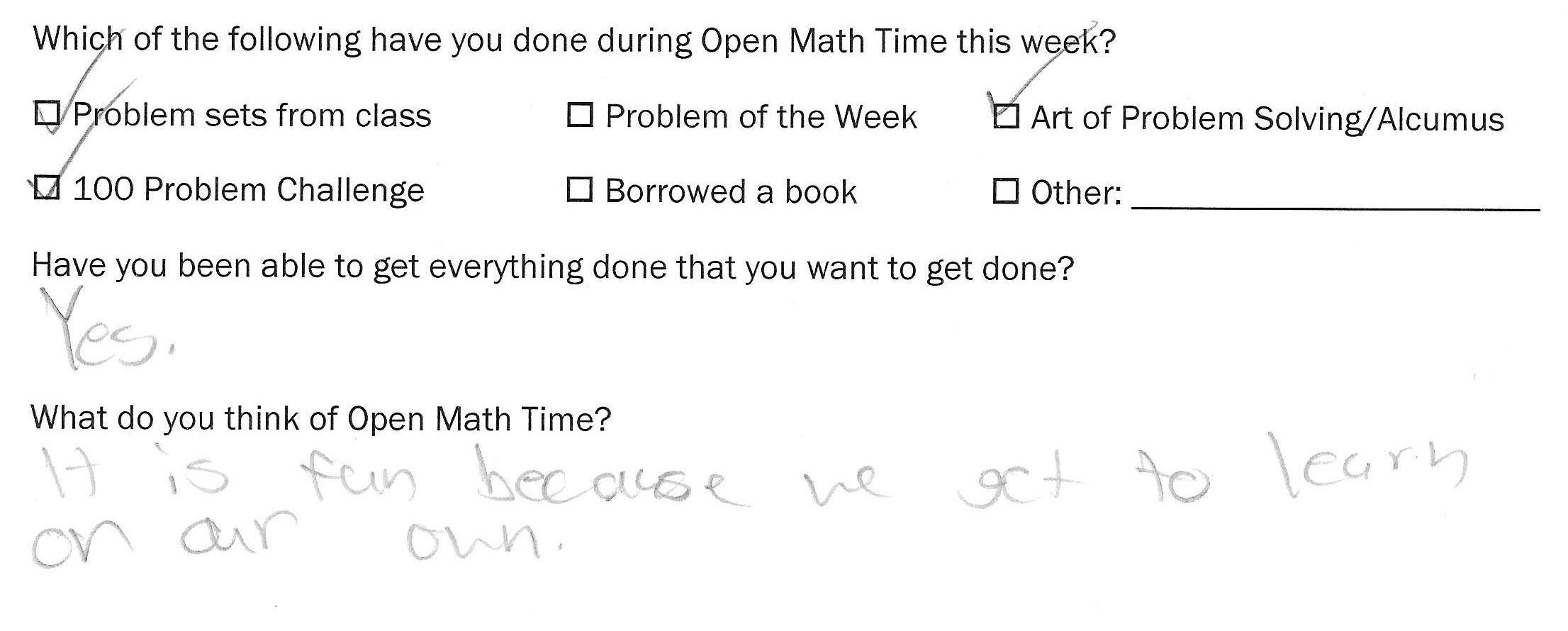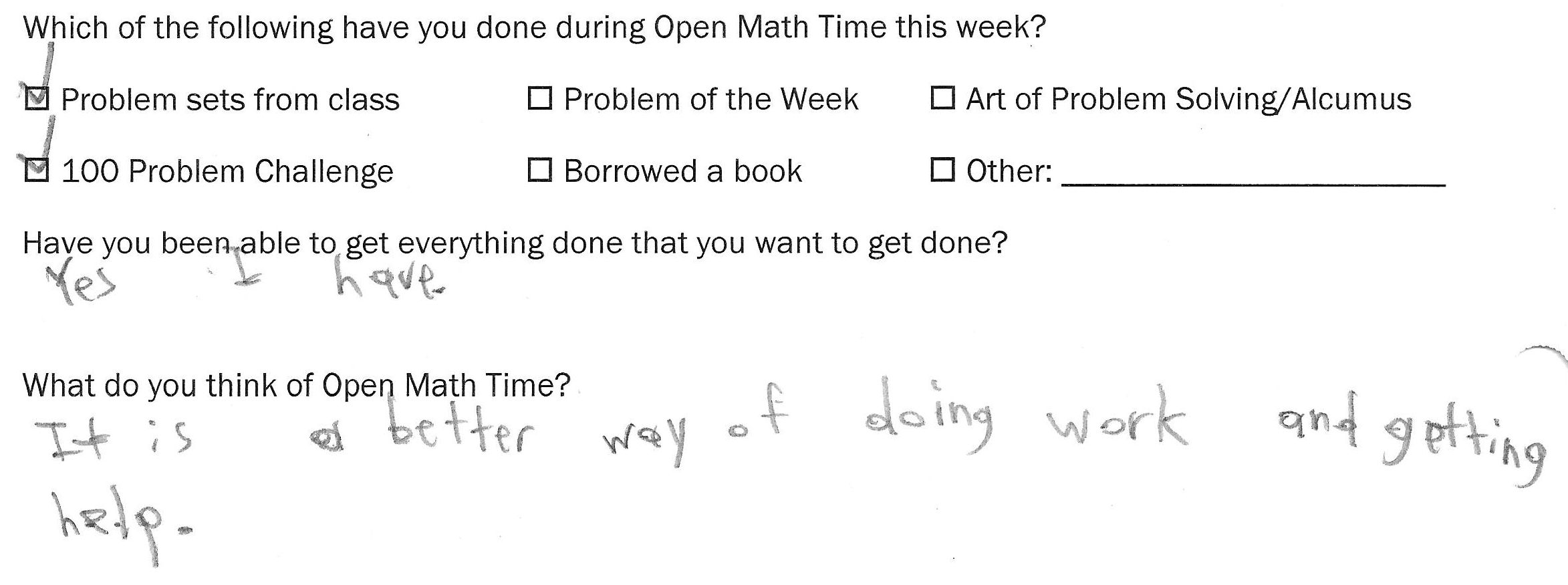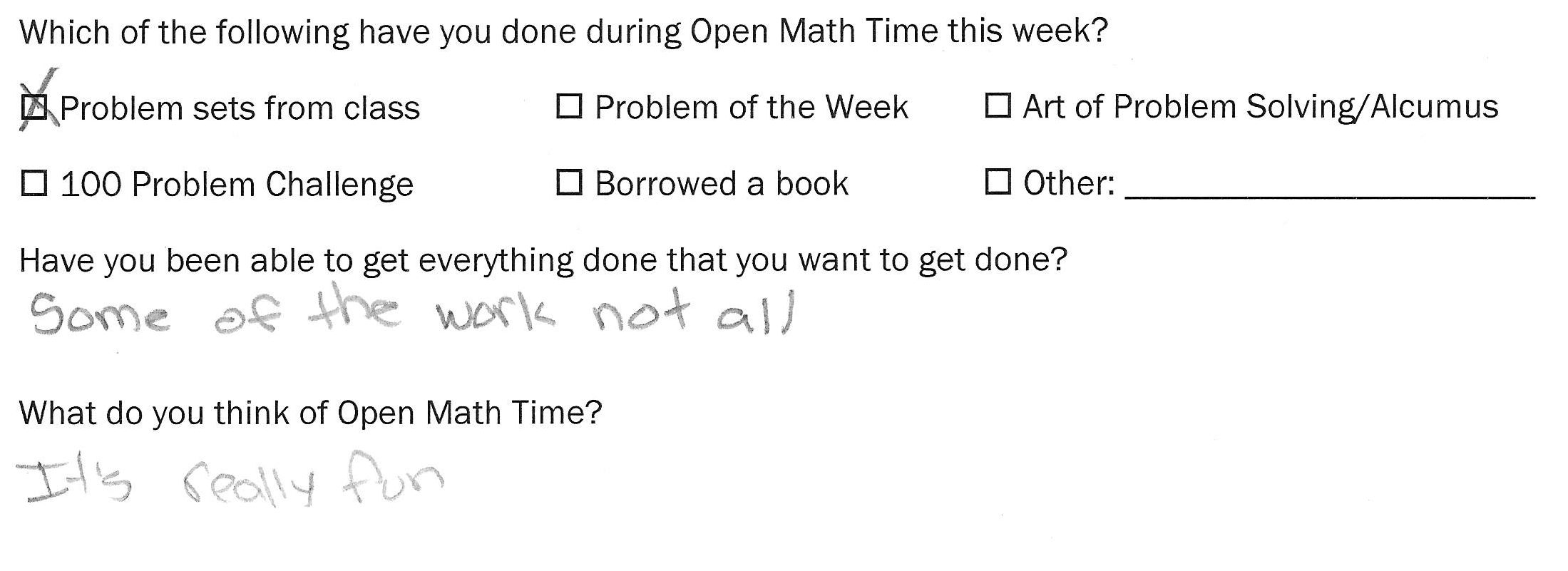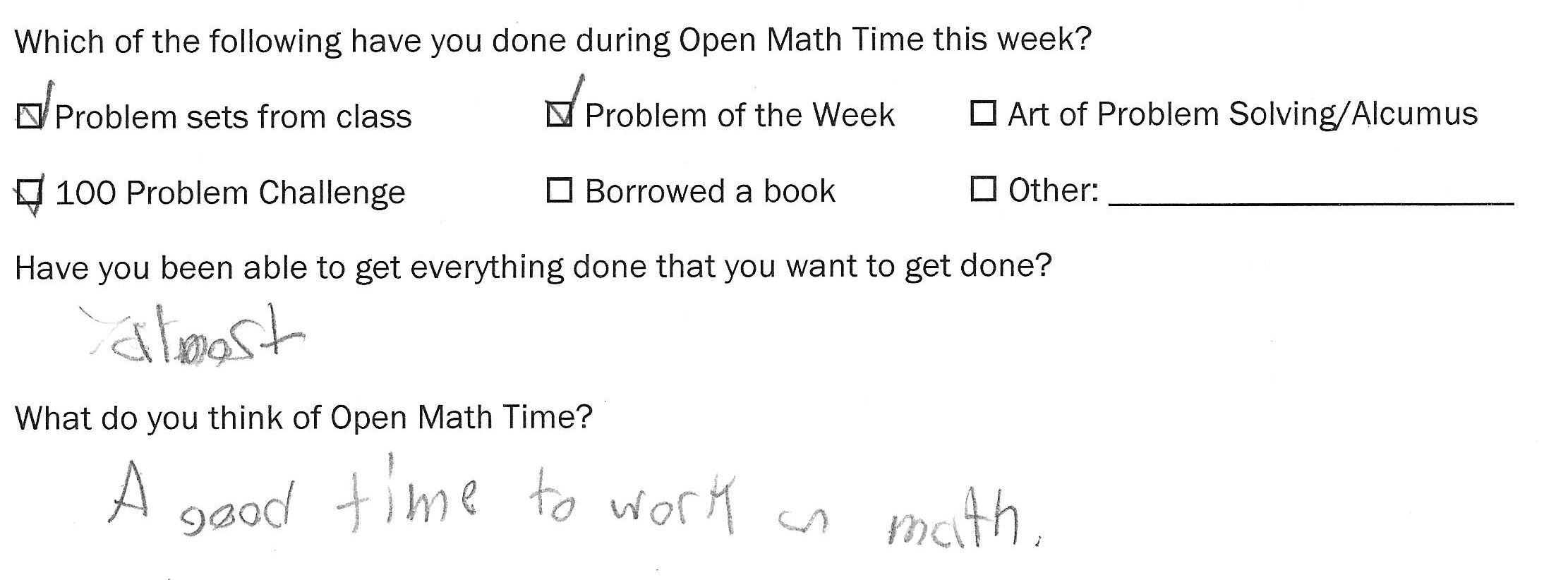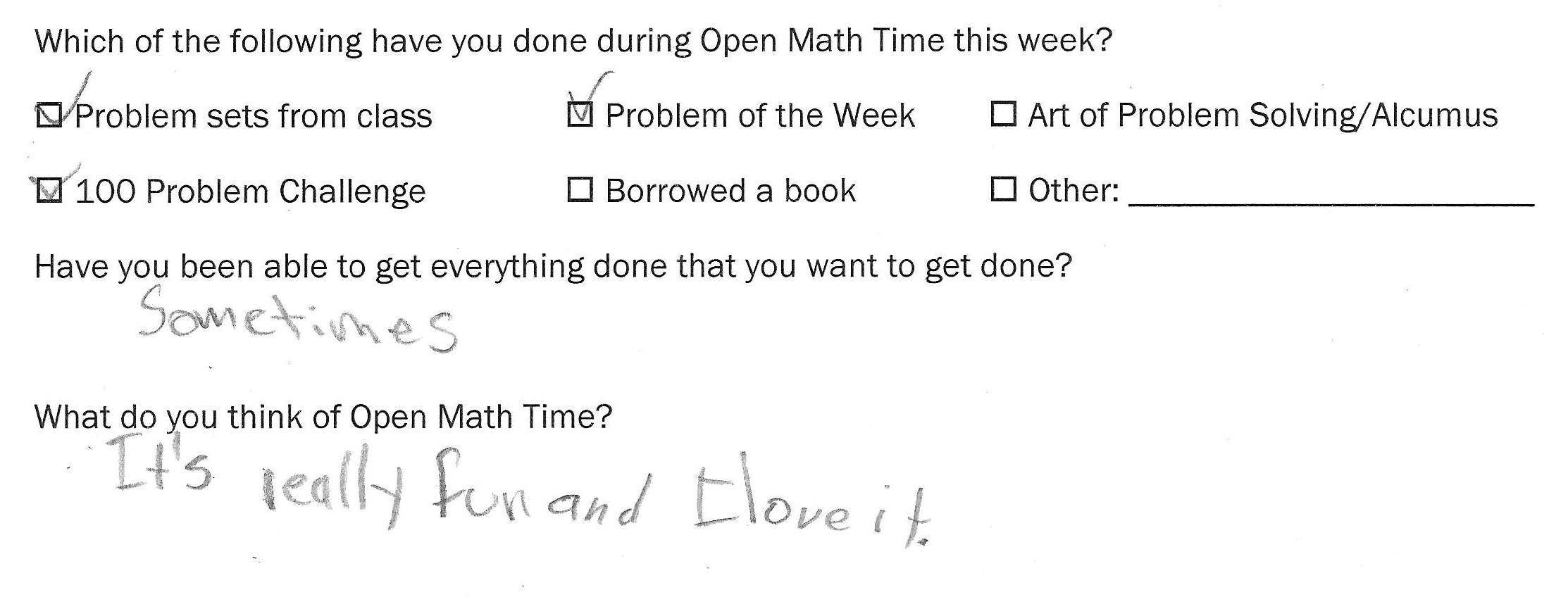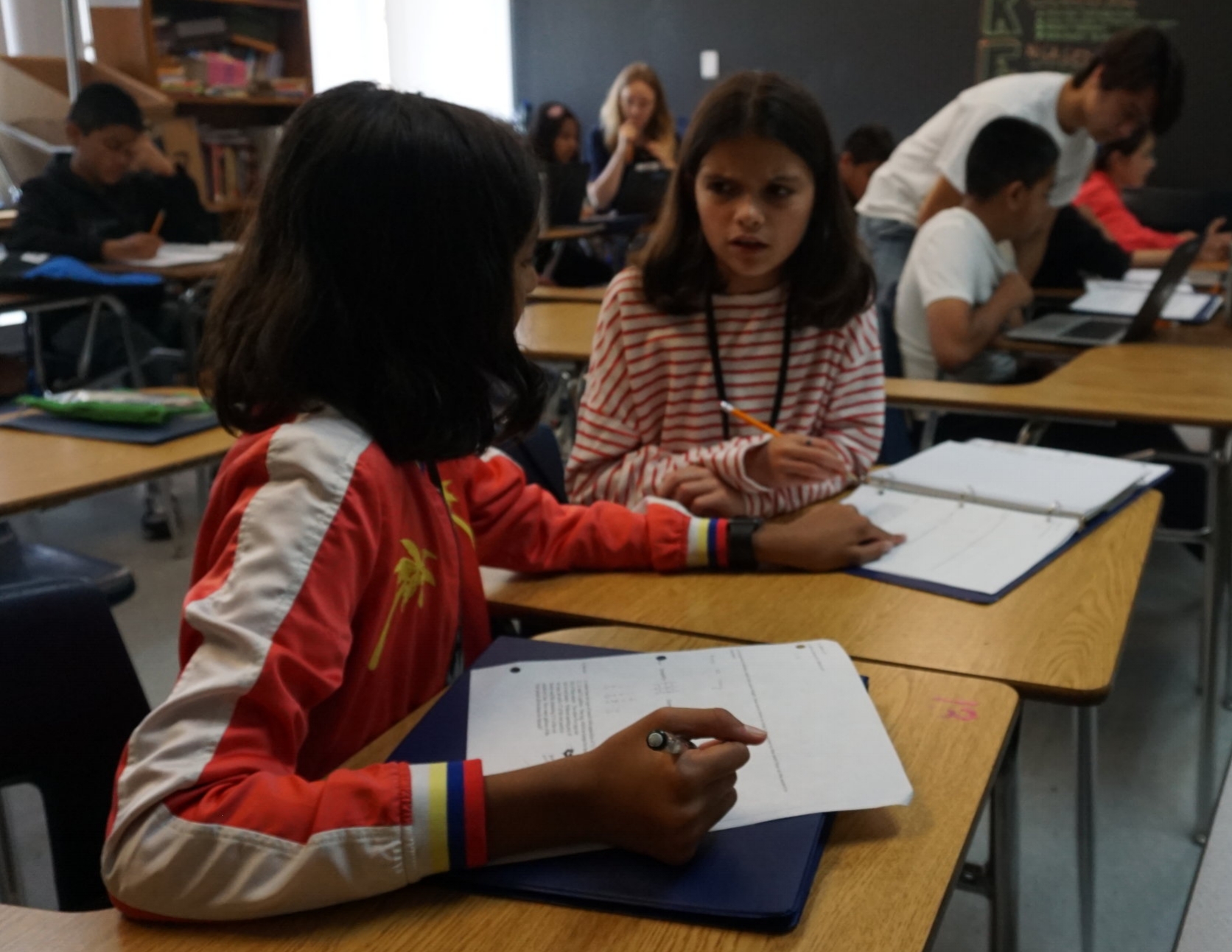Sometimes, Oscar would break from the trapezoid crew to work with Adib and Jarek on one of the remaining problems from the 100-Problem Challenge. Nearly half of the challenge problems were solved by groups of 2 or more students!
Faculty members also played an essential role in creating a strong community of mathematicians. Sam, our cryptography instructor, had students work in groups for weekly scavenger hunts whose clues were only readable through deciphering some code using a decryption technique learned in class. Diana had her math fundamentals class work in teams to analyze and interpret translations in Euclidean space. A math professor from Harvey Mudd visited our combinatorics class and was moved by the teaching strategy employed by Javier, the instructor. In that class, students were presented with a combinatorial pattern and asked to develop a conjecture and share it with their classmates, forming groups based on common reasoning and working to validate or invalidate others' conjectures.
Math relays, held every Friday afternoon, gave students a chance to work in teams to solve challenging math problems. Staff members selected which students worked together, giving students an opportunity to work with new people each week. It was an absolute joy to see mixed groups work together, often for the first time, and achieve success with the problems. The buzz during Relays was palpable, and students were encouraging towards one another, even when they weren't on the same team.
It's great to see the excitement about BEAM spill over into the start of the school year. We've received several submissions for the first challenge set and interest for pre-algebra classes. We expect to continue the mathematical momentum during our next math competition, set to take place in early November.
The unity among students was evident throughout the program. They supported one another in problem solving, combining their efforts to arrive at solutions. It was clear that the BEAM 6 community boosted the confidence of several students and left a lasting impression on their math journey.
But don’t take my word for it! Here’s what our summer students had to say about their experience at BEAM 6:

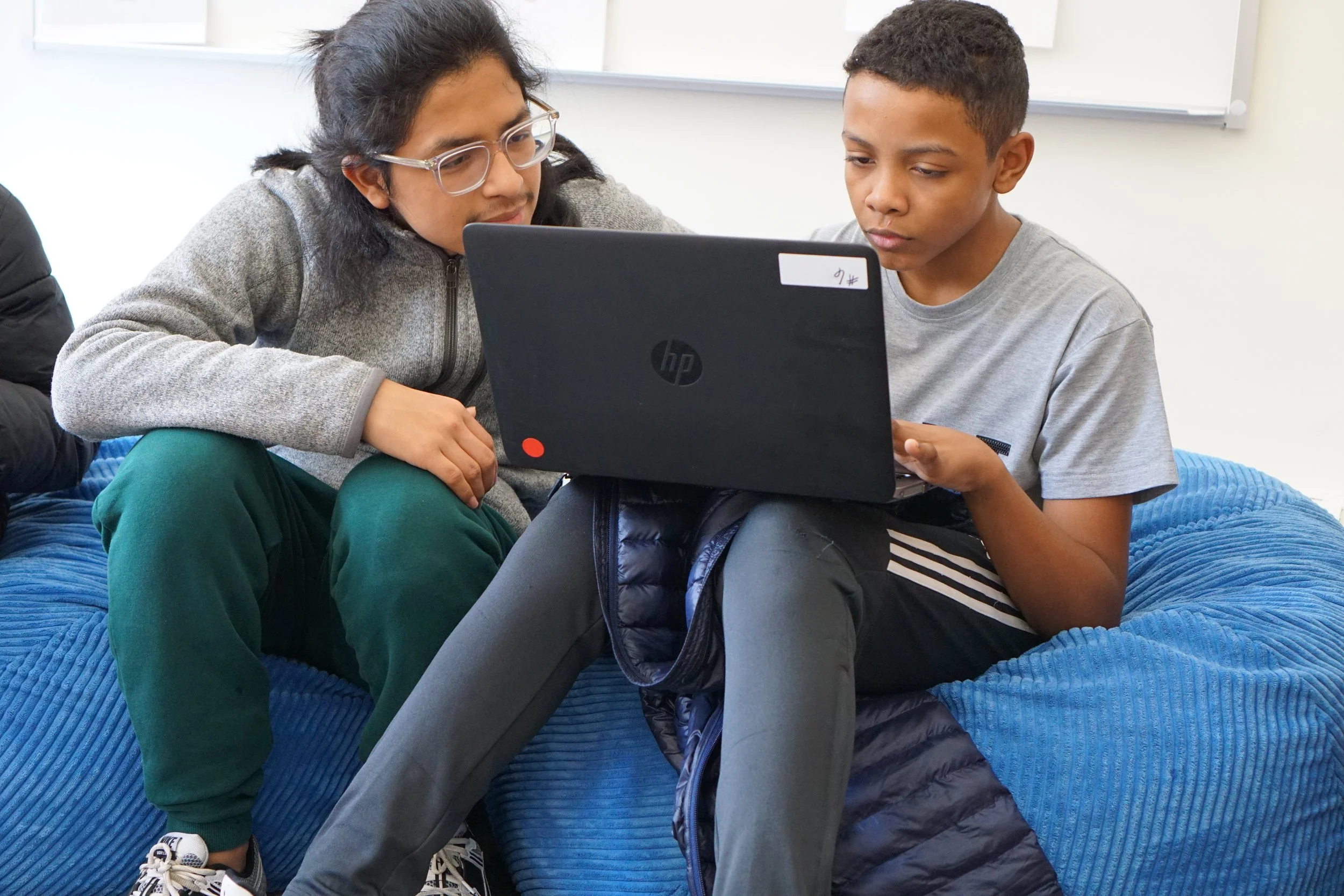



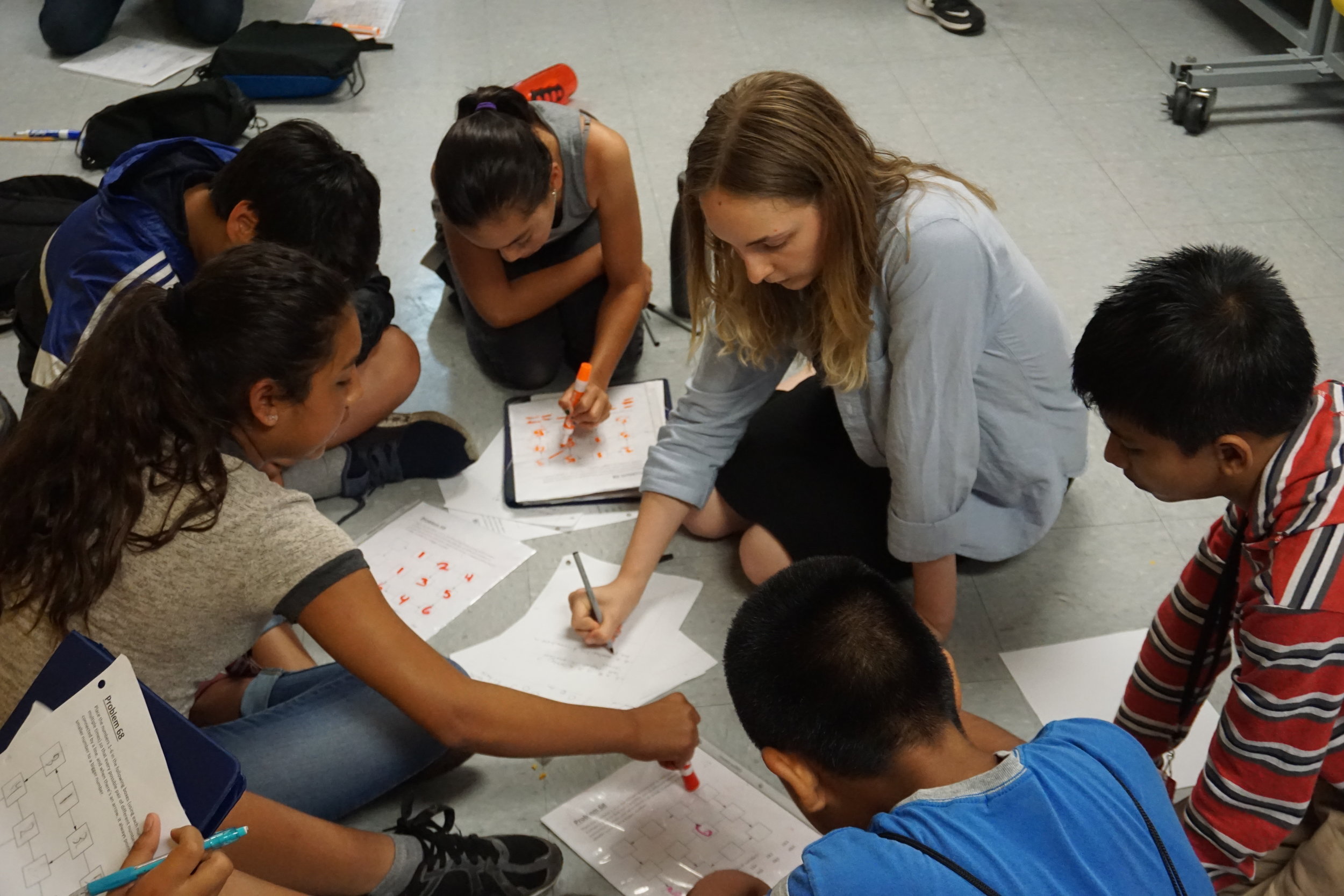










!["At first, I didn't felt [sic] like going to BEAM but then you supported me and I got accepted. Now I feel like BEAM is a family to me. Thank you."Daniel is a student at Young Oak Kim Academy.](https://images.squarespace-cdn.com/content/v1/561a6eede4b0448989c88951/1536615478385-EES7UQE1YXJJ7MF8UV5L/Daniel+P+Quote.jpg)

